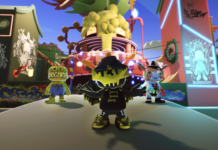The original Splinter Cell was the answer to my disappointment with Metal Gear Solid 2. In retrospect, I should have appreciated Metal Gear Solid 2 more, but regardless, Splinter Cell was an awesome game. It had fancy stealth gadgets and slick mechanics that really upped the ante. Splinter Cell Blacklist is the sixth iteration of the franchise. Is it just as enchanting in all the same ways, or something else entirely?
For the sake of full disclosure, I gave up on the Splinter Cell series when I was done with Chaos Theory, the third game. For whatever reason, I didn’t feel committed to the series, but I suppose that was a good thing, because Double Agent generally gets panned pretty hard. I did, however, try my hands at Conviction, the latest game released. I put it down pretty quickly, because I thought its mechanics were too black and white. I mean, if you stood in the darkness, your screen literally turned black, and you couldn’t be seen.

After playing Splinter Cell Blacklist, though, I think I may just be playing a different, unexpected game. No longer is stealth the means, but it’s more so an available tactic. Instead of being a secret agent, per se, I felt more like a skilled assassin. It was almost as though Splinter Cell Blacklist was like working for the CIA as someone trained by a killer in Assassin’s Creed.
In certain ways, this is blatantly clear. Blacklist has a one-button free run system akin to Ubisoft’s other massive hit. Sam Fisher can climb, run and hit cover more effectively and efficiently than ever before, and it’s pretty awesome. I was fascinated to find out when speaking to the director of the game that the similar approach to mobility wasn’t necessarily intended; free running just seemed to be the natural progression into making the game more seamless as a killer.

Watching the director play showed just how truly incredible the game could be with someone who gets into a rhythm. I didn’t do as well as he did when I played, but I could tell that this was a truly kinetic experience. The cover system proved to be fairly intuitive, despite being a work in progress yet. Running and climbing performed flawlessly, and it opened up the game to a lot of opportunities, like counter flanking and overwhelming combatants.
I didn’t really see too many new gadgets, with the exception of the sound vision goggles, which help identify enemies using sonar. But I did see the new upgrade system. Performing secondary objectives and getting sweet takedowns awards the player cash, and that money can be spent on upgrades Sam’s airplane. Though, upgrading the plane actually enhances Sam’s ground effectiveness. For example, upgrade the radar system on the plane and Sam will have a radar for spotting enemies. Upgrading some other part of the ship gives Sam more loadout options, etc.

Loadouts dictate the tactics Sam is best suited for. Bring along a machine gun and armor, and you’ll be prepping for some gnarly firefights. I prefer going with the stealth option, equipping a silenced handgun and a suit that blends in the dark for evasion. Loadouts can be customized to the player’s desire.
That’s the gist of it. Oh, the story? Pff. As if I’d know. The narrative was confusing, even with its best efforts to catch me up on the material, but I was thrown smack in the middle. The important thing is this: playing as Sam Fisher was a lot of fun. I miss his old voice, because this younger guy doesn’t fit, but otherwise, it’s a return I welcome with great anticipation. If the fluidity of Assassin’s Creed mixed with the approach of Splinter Cell games to date sounds like your cup of tea, you should probably have your eyes on this game.










